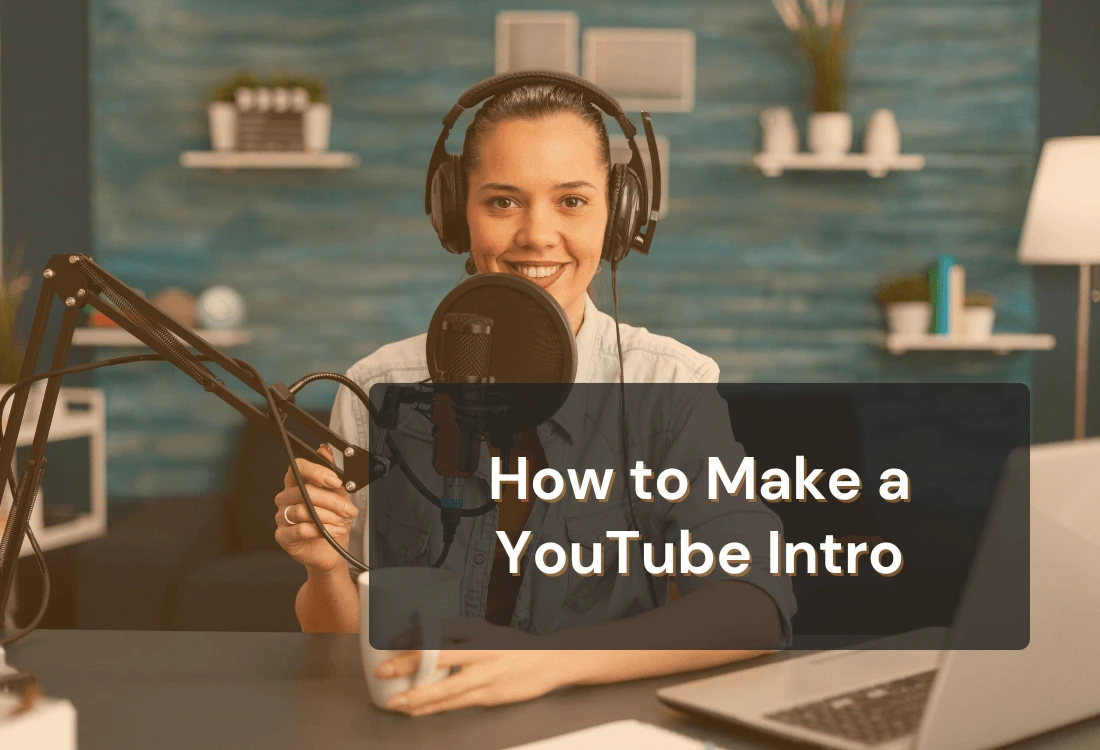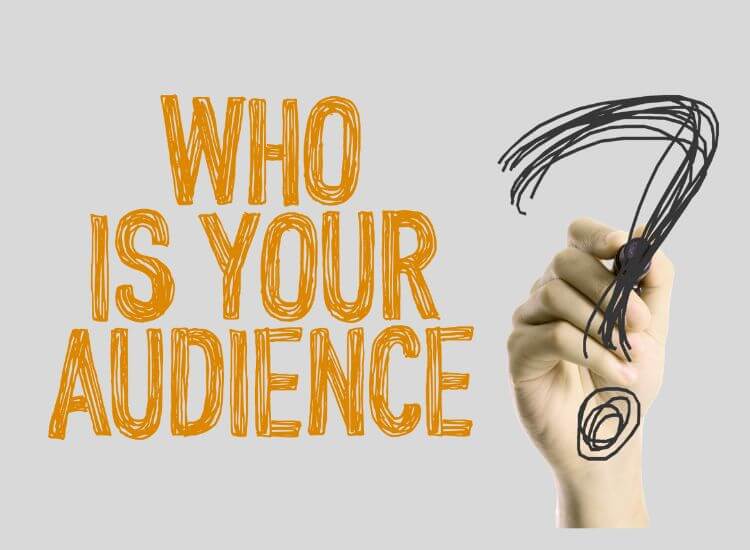



Your video intro is the first thing viewers see—and often the moment they decide to keep watching or move on. Mastering how to make a YouTube intro helps you create a consistent and professional look that strengthens your brand. Done right, it hooks your audience instantly and sets the tone for the rest of your content.
Viewers form opinions quickly, often within seconds. A short, polished intro that reflects your channel’s personality can turn a casual click into a lasting connection. In this guide, you’ll learn how to design, script, and produce intros that captivate viewers and make every second count.
A YouTube intro is a short clip at the beginning of your video. Its purpose is to introduce your channel, establish your brand identity, and set the tone for what viewers can expect. Think of it as your opening credits, but quicker and designed for online attention spans.
Creators often include logos, taglines, animations, or a brief on-camera greeting. For example, a gaming channel might feature bold graphics and high-energy music, while an educational channel might use clean visuals and a calm voiceover. The right intro makes your videos look more professional and helps viewers instantly recognize your content across multiple uploads.
When you learn to create a YouTube intro, you build a consistent visual signature for your channel. Over time, this consistency fosters familiarity, which can turn casual viewers into loyal subscribers.

Many studies on audience behavior show that viewers often decide within the first 30 seconds whether they’ll keep watching or move on. That makes your intro a critical moment to capture attention and prove your content is worth their time.
A strong YouTube intro helps you in three key ways:

YouTube doesn’t enforce strict rules about intros, but following its best practices can help you create content that looks professional, performs well, and stays within policy. Here are the main guidelines to keep in mind:
A strong YouTube intro is more than just a flashy clip at the start of your video. It’s a carefully crafted sequence designed to capture attention, reinforce your brand, and transition seamlessly into your content. When planning how to make a YouTube intro, keep these core elements in mind:
Your intro should instantly communicate who you are. Use your channel’s logo, consistent color palette, and recognizable fonts. Over time, these visual cues create familiarity, making it easy for viewers to connect your intro with your content at a glance.
Sound plays a big role in shaping mood. Upbeat music can energize your audience, while softer tones can create a calm, professional vibe. Stick to royalty-free or licensed tracks to avoid copyright issues. Subtle sound effects, like a swoosh or click, can also enhance transitions.
Animation gives your intro a professional touch. Motion graphics, animated logos, and smooth transitions make your content look polished without overwhelming viewers. Keep visuals clean and simple. Flashy effects can distract from your message if overused.
Even if your intro is short, a brief tagline or voiceover can help define your channel’s purpose. A simple line like “Tips for Better Presentations” or “Daily Fitness Motivation” makes it clear what your audience can expect.
Your intro should look and sound the same across all your uploads. This repetition builds recognition and gives your channel a professional identity that viewers trust.

Figuring out how to make a YouTube intro is easier when you break it into clear steps. Here’s a practical process you can follow to create an intro that feels professional and engaging.
Before you create your intro, think about the overall style of your channel. The intro should reflect your personality, niche, and the expectations of your viewers. When the tone matches your content, it feels seamless and authentic.
Here are a few examples:
Aligning your intro with your audience shows consistency. It reassures viewers that your channel delivers exactly what they’re looking for.
The software or apps you use will determine how much creative control you have over your intro. The good news is there are options for every skill level and budget. If you’re just starting out, beginner-friendly tools can help you produce something polished without spending hours learning complicated features.
Length is critical. The ideal YouTube intro runs between 5–10 seconds. Any longer, and viewers may lose interest before your content begins. You want your intro to grab attention without feeling like a delay.
Short intros also boost audience retention. Many successful creators trim their intros down to the bare essentials, ensuring viewers don’t click away. Treat your intro like a teaser, it should be quick, memorable, and leave people wanting more.
If you intend to include a voiceover or tagline, please consider writing it out before recording. A script helps you stay consistent and avoid rambling. Keep your lines short and easy to follow.
Teleprompter.com app can make this process effortless. Instead of memorizing lines or glancing at notes, you can read naturally while keeping your eyes on the camera. This gives your intro a professional polish and saves time during retakes.
Your branding is what makes your channel instantly recognizable. The intro should showcase your unique style in a way that viewers remember. Even small details can make your content feel more professional and consistent.
Consider adding:
Combine these with subtle animations or transitions. A logo fade-in or swipe effect is often more effective than overwhelming, flashy visuals.
Audio is just as important as visuals when creating your intro. The right track can set the mood, energize viewers, or add polish to your content.
Here’s what to focus on:
Balance is key. Your audio should support your visuals, not overpower them. Keep volumes consistent so viewers aren’t startled when the intro begins.
When your intro is complete, export it in a YouTube-friendly format. Stick with MP4 or MOV, as these are universally supported and provide high quality without large file sizes.
Film and export in 16:9 aspect ratio since it’s the standard for YouTube. For quality, 4K resolution is recommended, it looks sharp on all devices and is future-proof, while still manageable for upload and streaming.
If you’d like a full breakdown of the best resolutions, aspect ratios, and dimensions for every type of video, check out the detailed YouTube Video Size Guide.

Even after following the basic steps, there are small tweaks that can turn a good intro into a memorable one. If you want your content to look polished and professional, these pro tips will help you elevate your work and keep viewers watching.
Not every audience reacts the same way. Try creating two or three variations of your intro with slight differences, such as different music, logo animations, or lengths.
You can use YouTube Analytics to track which version keeps viewers engaged the longest. This A/B testing approach takes the guesswork out of editing and ensures you’re building intros your audience actually prefers.
Your intro is the perfect spot to remind viewers to take action, but it needs to be subtle. A quick “Subscribe for more” line or a small on-screen graphic can be effective without interrupting the flow.
Overloading your intro with too many prompts can feel pushy. Instead, keep it natural and let the main content do the heavy lifting.
A polished intro strengthens your brand, but discoverability matters just as much. Pairing your intro with the right hashtags in your video description helps YouTube understand your content and recommend it to the right audience.
Hashtags work best when they’re specific to your niche and consistent with your branding. Generic tags like #video won’t do much, but targeted ones can boost search visibility and engagement. If you’re unsure which hashtags to use, try the free YouTube Hashtag Generator to instantly find effective, relevant options for your channel.
Most people now watch YouTube on their phones, so design your intro with small screens in mind. That means using larger fonts, clear logos, and high-contrast colors.
If text or details are too small, mobile viewers will miss them. Keep designs bold and simple so they translate well across devices.
A great intro doesn’t just stand out on its own—it also blends seamlessly into your video. Use smooth fade-outs or quick cuts that flow naturally into the start of your content.
Avoid jarring transitions that make your video feel disjointed. The goal is to make the intro part of the story, not a separate clip that interrupts it.
Your intro doesn’t have to stay the same forever. If you rebrand your channel, change your content style, or notice audience engagement dropping, it might be time for a refresh.
That doesn’t mean you need to start from scratch. Small updates, like swapping out music, modernizing graphics, or tweaking your tagline, can give your intro new life without losing brand recognition.
Your intro is the first impression viewers get, and mastering how to make a YouTube intro can determine whether they stick around or click away. The best intros are short, engaging, and consistent with your brand. By combining strong visuals, clear branding, and the right audio, you create an identity that viewers instantly recognize and trust.
As your channel grows, refine your intro to keep it fresh without losing familiarity. Even small updates, like adjusting music or modernizing animations, can make a big impact. If you want to deliver spoken intros with confidence, make it easier with the right tools. Transform your script into smooth delivery, sign up for free with Teleprompter.com.
One of the biggest mistakes is making the intro too long—viewers lose interest quickly if it drags on. Another common issue is overloading it with flashy effects that distract from your content. Forgetting to tailor your intro to your audience can also hurt retention, as style and tone need to match the type of channel you run.
The sweet spot is between 5–10 seconds. Anything longer risks losing viewers before they get to the actual content. A short, punchy intro keeps energy high and transitions smoothly into your video.
Not at all. Beginner-friendly tools like Canva and Filmora are more than enough for most creators. Professional software like Adobe Premiere Pro or After Effects gives more flexibility, but it isn’t required unless you want advanced animation or effects.
No, unless you own the license or have explicit permission. YouTube’s copyright policies are strict, and unlicensed tracks can lead to strikes or demonetization. To stay safe, stick with royalty-free libraries such as Epidemic Sound, Artlist, or the YouTube Audio Library.
If your intro includes spoken lines, a teleprompter app can make your delivery smoother and more confident. It keeps your eyes on the camera and eliminates the need to memorize lines or glance at notes. This small step can make your intro look far more professional and polished.



